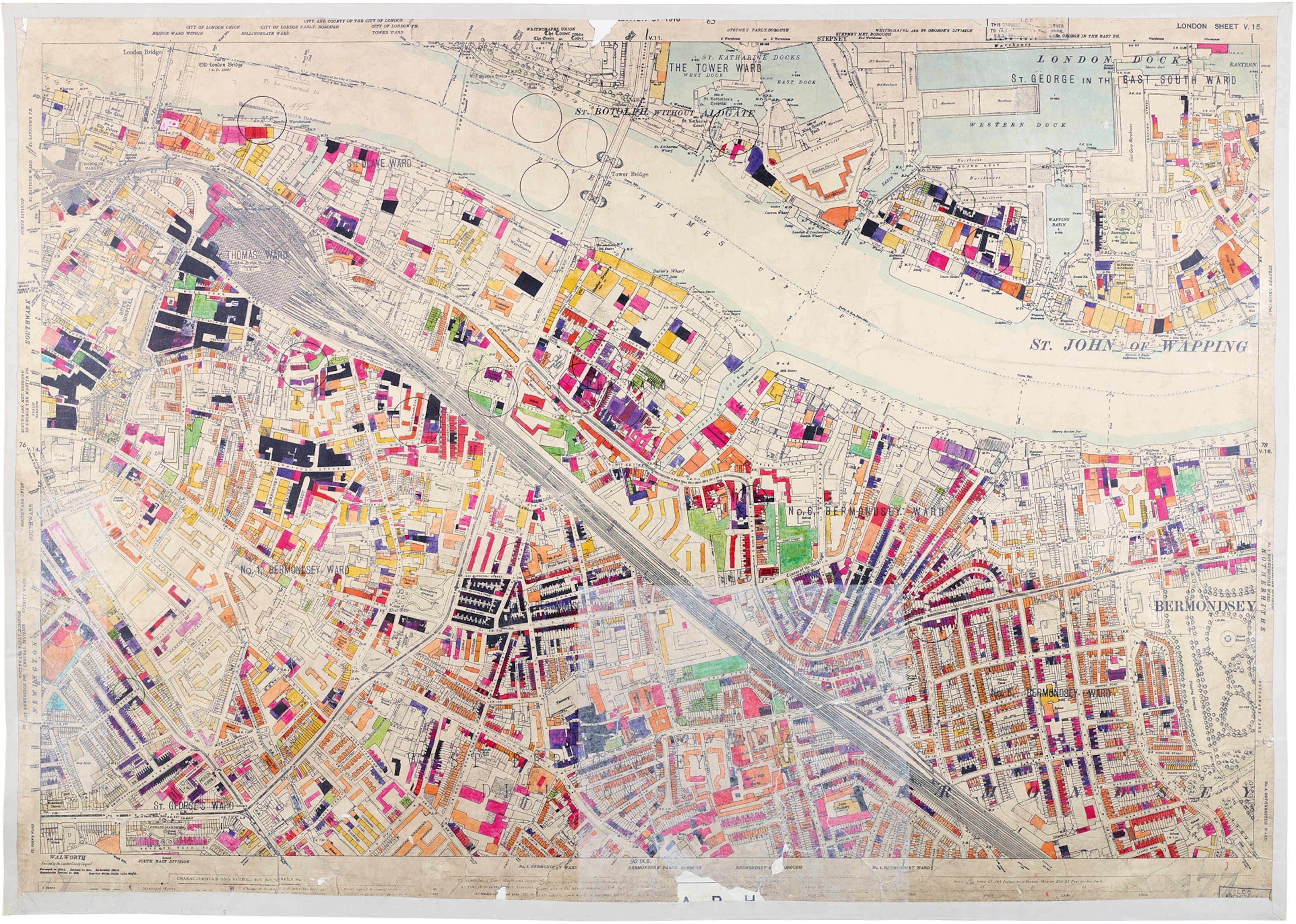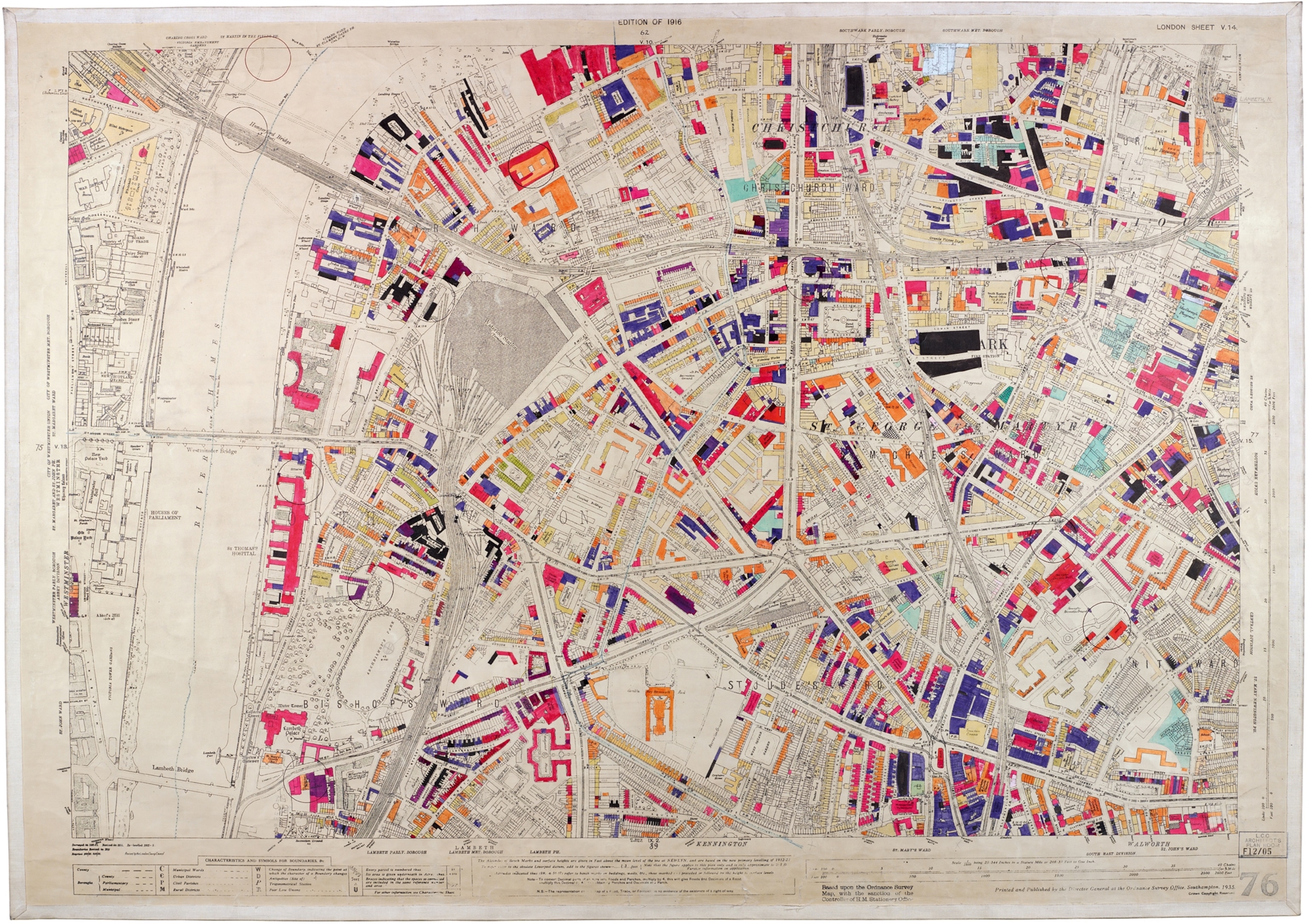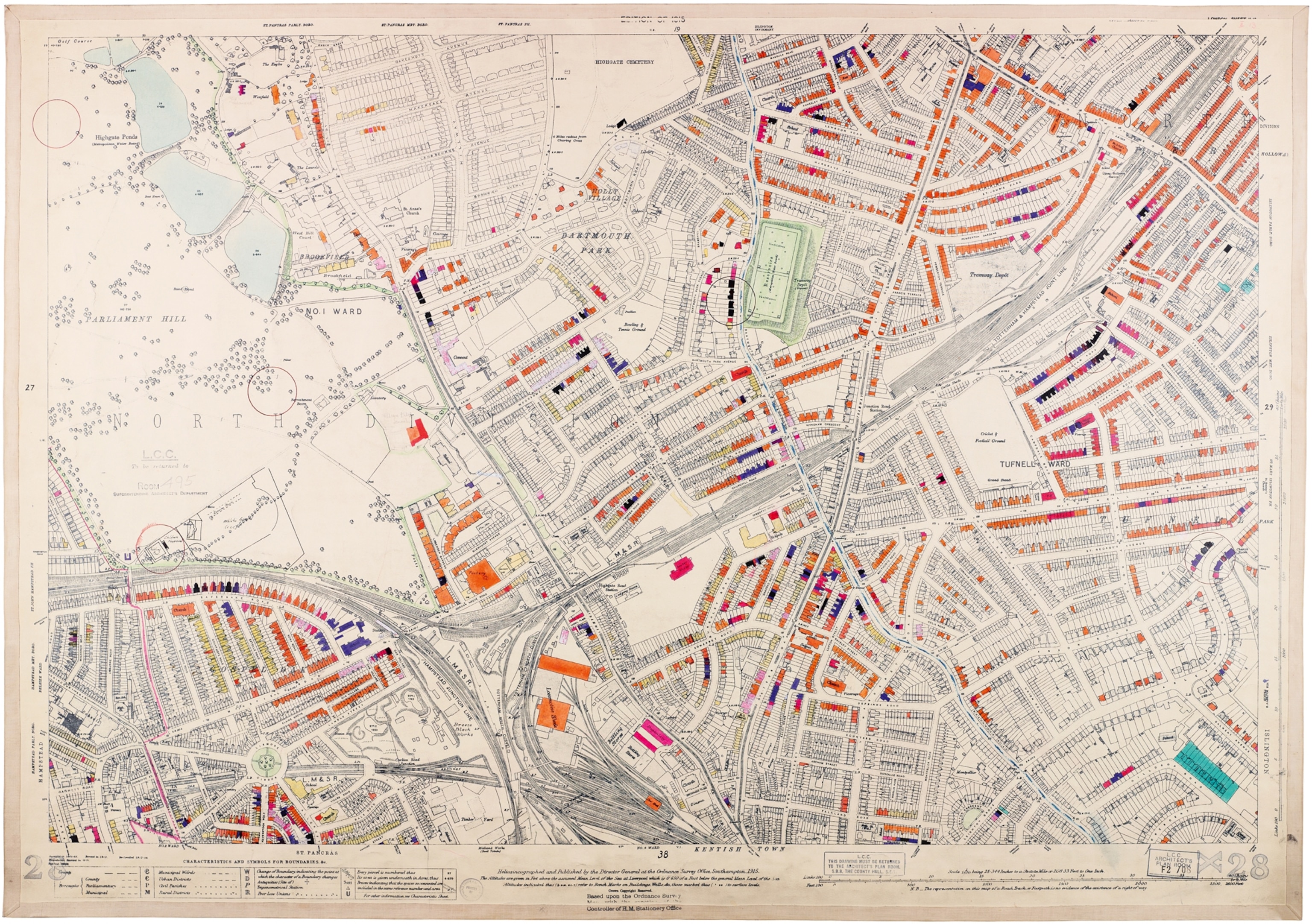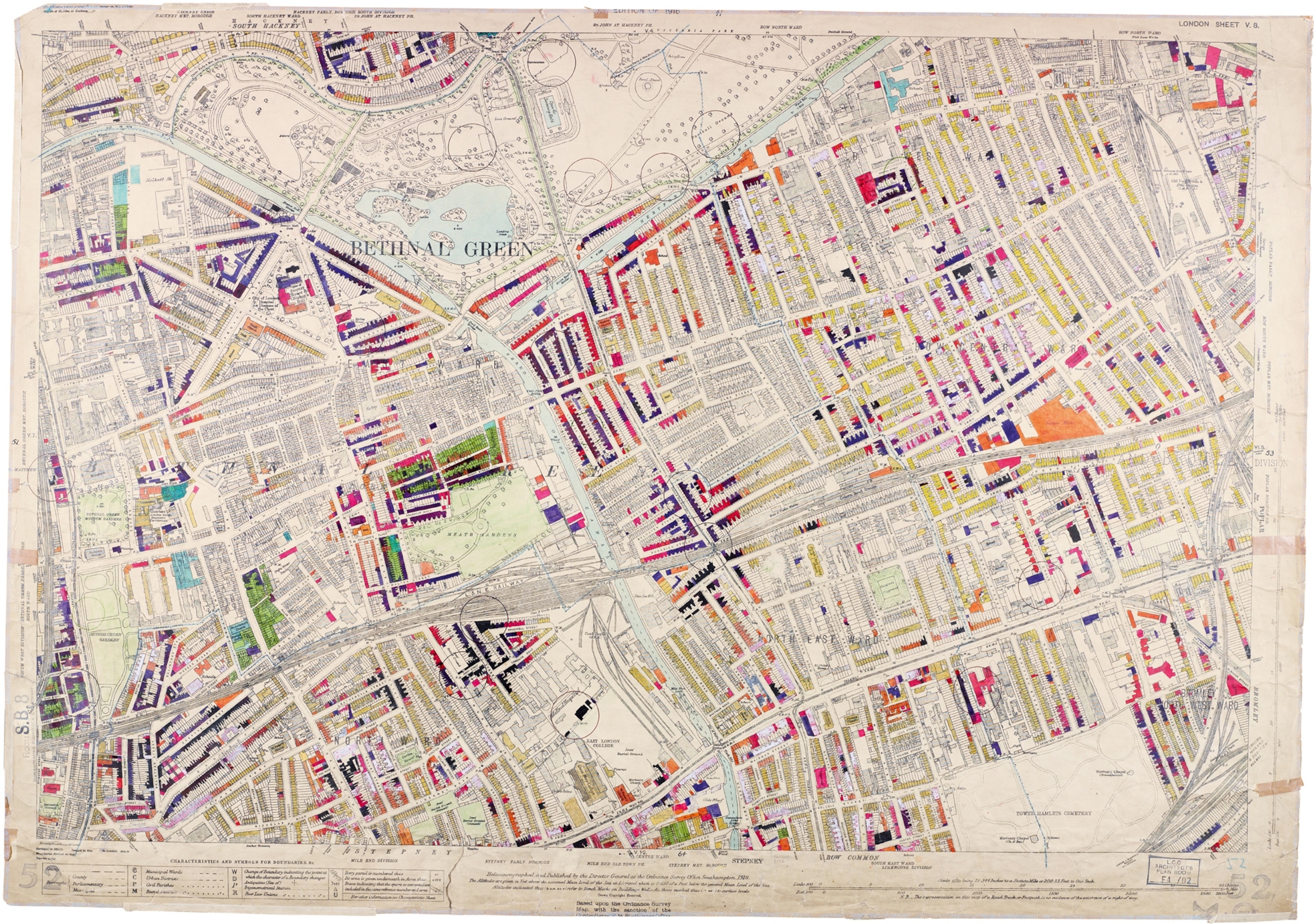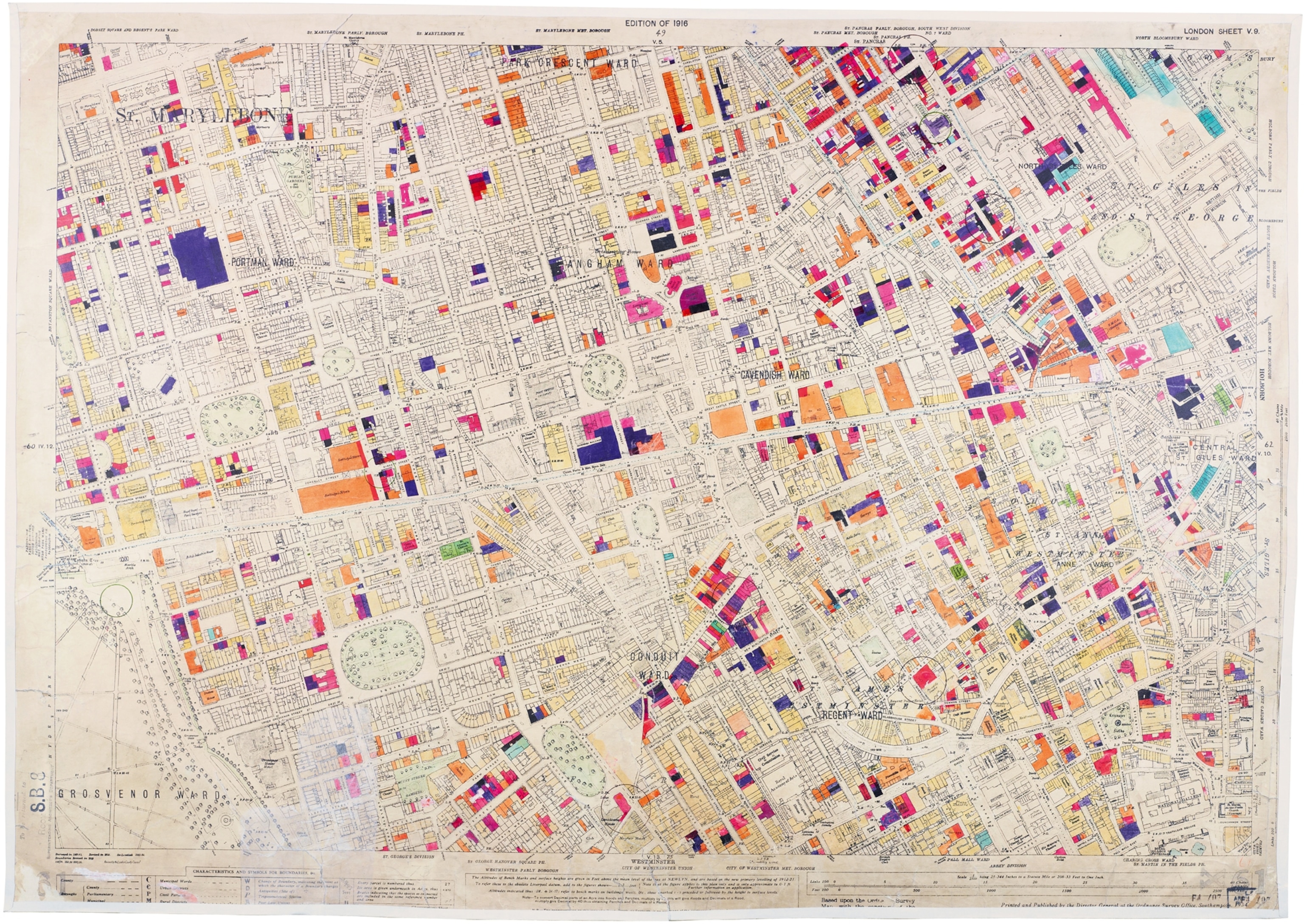Bomb-Damage Maps Reveal London’s World War II Devastation
The German Luftwaffe dropped thousands of bombs on London from 1939 to 1945, killing almost 30,000 people. More than 70,000 buildings were completely demolished, and another 1.7 million were damaged. The extent of the damage to each and every one of these buildings was logged and mapped in near real-time by surveyors, architects, engineers, and construction workers.
The result is an incredible collection of maps, color-coded by hand, that reveal the extent of the destruction in painstaking detail. Today, the maps remain an invaluable resource for academics, family historians, and even builders trying to avoid touching off unexploded bombs.

Now these bomb census maps are available in a beautiful oversized book released earlier this year to commemorate the 75th anniversary of the end of the Blitz, a nine-month period during which London and other British cities were relentlessly attacked by the German air force. “The London County Council Bomb Damage Maps, 1939-1945” contains large, high-quality reproductions of all 110 maps of the London region along with commentary from Laurence Ward, principal archivist at London Metropolitan Archives, which holds the original maps.
“There are just so many stories which these maps provide the starting point for,” Ward says. “They’re a great source in the sense that they make you want to go on and find out more.”
As soon as the bombs fell, data collection for the maps began. The London County Council, the central administrative authority of what was known as the County of London (roughly the area known today as Inner London), tasked its Architect’s Department with responding to bomb damage as it occurred. Surveyors, who before the war mostly worked on building sites to make sure regulations were followed and buildings were up to code, suddenly found themselves in charge of rescue operations. They worked with local rescue services made up of people from the construction fields, like engineers and bricklayers.
“Their primary aim was to pull people out of rubble and destroyed buildings and try to save lives,” Ward says. “They were set up as the rescue service because they had an understanding of how buildings worked, so if a building was about to collapse, making a judgment on how much time you had to get into the building and try and save people.” In all, the rescue services responded to 16,396 incidents and saved 22,238 people. Fifty-four of them died during these efforts.
Once a rescue operation was finished, the surveyors and rescue workers would work together to classify the damage, building by building, into six categories ranging from “blast damage—minor in nature” to “total destruction.” Their reports were sent to the London County Council, where they were recorded onto 1916 Ordnance Survey maps. Each damage category was given a color (shown in the key, above right), and the status of every affected building was colored by hand on the maps.
A diary entry included in the book, from architect Andrew Butler on April 20, 1941, gives an idea of what the work was like:
For the block I have started on—eight floors high with two flats on each floor—has had its whole face ripped off … I found it possible to stand on part of the roof. So, clutching a broken chimney, I surveyed the damage there. My notebook became very messy. What with the dust and soot, wet filth and the perspiration of fluster on my hands, it was difficult to read what I wrote. The notes served their purpose however when, after drying the book, I had to transcribe them into a report.
Visually, the maps are quite striking. The apparent randomness of the colors stands in contrast to the more orderly pattern of streets and buildings. In some places, whole swaths containing several blocks and dozens of buildings are colored black (total destruction) and purple (damaged beyond repair). In other places, the severity of damage varies widely, with areas colored yellow (minor blast damage) peppered with black, purple and red (seriously damaged).
Circles on the map denote strikes from V-1 and V-2 rockets, late additions to the German arsenal that caused tremendous damage. Beginning in June of 1944, Germany added the V-1 flying bomb to its attacks, which up to that point had mostly consisted of aircraft dropping incendiary bombs. The V-1 was a pilotless aircraft carrying a 1,870-pound warhead that could navigate by autopilot and crash into a target. More than 2,000 landed in the London region, killing 2,329 people. In September, a V-2 rocket, the world’s first ballistic missile, hit London. By the end of the war, 517 had detonated in London, killing 2,511 people.
The damage from World War II transformed London into the architecturally diverse city it is today. The maps help explain how rows of grand old flats can be interspersed with more modern buildings.
“Looking at a very, very small area, you can have buildings dating from maybe five different centuries sitting in quite close proximity to each other,” Ward says. “As you go further out you might be walking along a very fine Victorian street full of these beautiful terraced houses with lots of Victorian detailing on them, and then suddenly right in the middle of this road, there’ll be this kind of 1960’s low-rise housing block, very functional, very square. But it’s often that was the result of bomb damage.”

The book also contains a remarkable collection of photos of damage in the City of London, a square-mile section at the center of greater London, taken by two police officers who would photograph damaged areas in the wake of attacks. The combination of the maps showing how widespread the destruction was, and the photos, such as the one above, showing what the damage looked like up close, really brings home the scale of the devastation.
“I just find it staggering that they managed to just carry on. London just carried on working,” Ward says. “It must have been an extraordinary time.”

